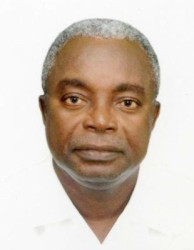The recently commissioned official enquiry into accidents in the mining regions in Guyana including mining pit cave-ins that result in loss of life is unlikely to serve any remedial purpose except the authorities are successful in enforcing rules and regulations that change key aspects of the operating culture in the mining sector, an experienced mining sector employee has told this paper.
Stabroek Business has confirmed that the newspaper’s informant has recently returned to his East Coast Demerara home having been an employee at a large mining operation in Region One for more than two years. He says that since he is uncertain as to whether he will return to work in the sector he wanted to withhold his name on account of a fear of victimization insofar as he might find it difficult to secure employment in the sector again.

Asked if he believed that the enquiry would find that many, perhaps even most mining accidents were due to a lack of mindfulness of rules among operators, the miner told Stabroek Business that one might well find that there is a difference between what the enquiry finds and what actually exists.
“The problems start with corruption and the fact that the government can’t seem to enforce rules. The places where we mine gold are far away from Georgetown and when you are in those places you are on your own. You do as you like. The boss makes the decision and the people take the risks. It’s how we make a living.”
According to the miner the absence of controls and adherence to regulations is some mining operations had to do with a culture of corruption that causes mining officials to “turn the other way” as far as ensuring that the regulations are adhered to. “It’s the gold and the money that talks,” he quipped.
In the wake of the recent serious accidents in the mining sector, some of which have resulted in loss of life, the Ministry of the Presidency announced an official enquiry into mining accidents and invited “stakeholders in the industry and other concerned citizens” to make contributions to the enquiry.
The investigating Committee which is headed by former Commissioner of the Guyana Geology and Mines Commission Dr. Grantley Walrond has been assigned to, among other things, identify instances of mining pit collapses over the past twelve months; review inspection reports, complaints made by stakeholders or any other documents in relation to the mining properties where mining pits collapsed; review the receipt of complaints, the flow of decision-making to investigate the complaints, the issuing and enforcement of orders, fines and penalties as provided by the Mining Act and Regulations and review of permits/licences with a view to determining compliance of all parties.
A critical assignment handed to the Mining Accidents Review Committee is that of conducting investigations into any likely breaches of standard operating procedures. This assignment is likely to delve into areas that include alleged improper relationships between officials of the Guyana Geology and Mines Commission (GGMC) and private gold mining operators, insufficient attention to the enforcement of safety-related regulations and reports of bribery and corruption in the sector.
While the Committee is expected to visit mining sites where some accidents have occurred the miner with whom, Stabroek Business spoke said that some of the details of practices which amounted to taking unacceptable risks and ignoring regulations could only be properly understood if the Committee is able to access the men whose lives are put at risk. “Funny enough, it is the people who have the least to get that have to risk their lives,” he said.
Asked whether he has as yet given evidence to the Mining Accidents Review Committee the miner said that he was concerned that if he “speak his mind” he may no longer be welcome as an employee in the sector. “I don’t know if I want to take that kind of chance,” he said.
The views expressed to this newspaper by the East Coast Demerara miner bear a remarkable resemblance to those related by a GGMC official just under a month ago which formed the basis of this newspaper’s lead story in its issue of July 17. The mining official had told the Stabroek Business that the frequency of mining accidents and the attendant loss of life was a reflection of what he described as a “long-standing pattern of lawlessness and indifference to the value of human life” that obtains in the sector,
Speaking in the wake of the May mining pit cave in at Potaro which resulted in the deaths of ten miners and triggered the setting up of the Mining Accidents Review Committee, the GGMC source told this newspaper that he expected that part of the objective of the enquiry was to draw attention to what he described as “likely internal enquiries” at the GGMC.
While the GGMC official had expressed the hope that the Walrond Commission “deals frankly with the problems” of the sector, the East Coast miner expressed a healthy degree of skepticism as to whether the outcome will bring any remedial measures. “After a time, when things continue the same way you get it into your mind that things can never change. You get the impression that with gold it is just money that talks,” the miner said.
The GGMC source had told Stabroek Business that while one of the responsibilities of the Review Committee was to identify “instances of mining pit collapse within the last twelve months” he believed that what was more important was the application of the requisite penalties in cases where culpability was established.









